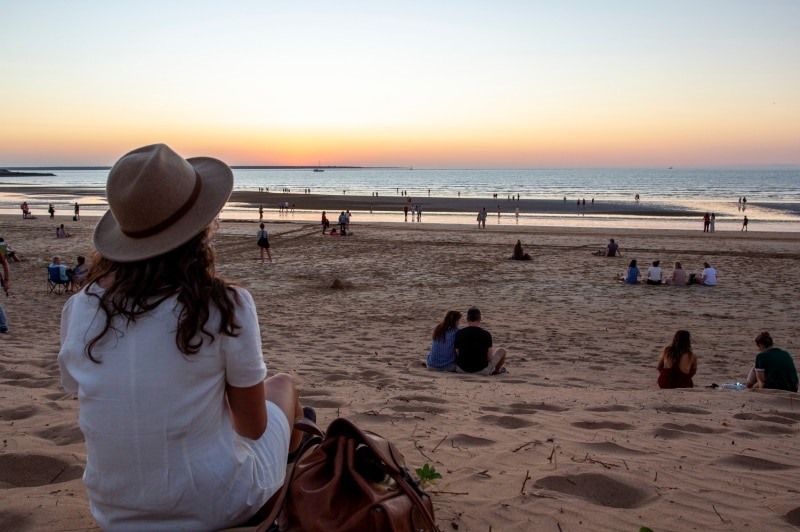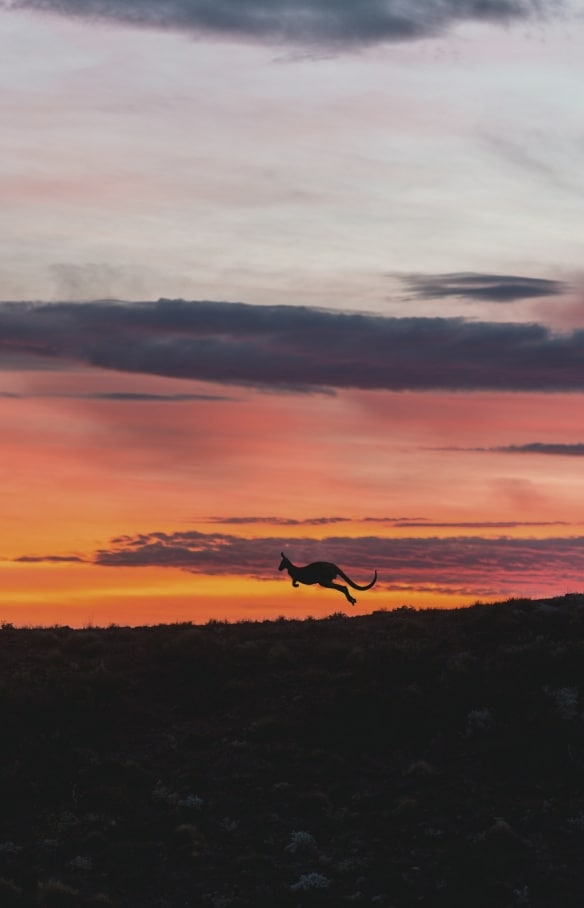
Mon Repos, Southern Great Barrier Reef, Queensland © Jewels Lynch/Tourism Events Queensland
7 wildlife events to catch in summer
Here's where to witness Australia’s most spectacular wildlife moments throughout December, January, and February.
Watch baby turtles hatch
Watch baby turtles hatch
One of the most special events on the wildlife calendar? Baby turtles hatching from their eggs and dashing to the ocean. Mon Repos Turtle Centre, which lies on the southern tip of the Great Barrier Reef, is home to the largest population of nesting loggerhead turtles on Australia’s east coast. Nesting season is from November to February, so for the best chance to witness the tiny hatchlings emerging, visit between mid-January and early February.
Witness red crabs marching
Witness red crabs marching
Every summer, Christmas Island becomes the stage for one of nature’s most extraordinary spectacles: the red crab migration. Millions of red crabs march from the island’s forests to the ocean to spawn. Their incredible journey takes place from November to January, transforming the island into a carpet of red. Witnessing this mass migration is a surreal experience, offering a front-row seat to one of the world’s most iconic wildlife events.
Share an island with wombats
Share an island with wombats
January and February on Maria Island (east of Hobart) bring glorious weather for spotting the island’s many adorable baby wombats. Maria Island is a haven for wildlife. In fact, there are so many animals and birds on the Island that it’s nicknamed “Noah’s Ark.” Take the Maria Island Walk to spot local wildlife – including dolphins, kangaroos, and of course, wombats – in their natural environment.
See baby fur seals splash
See baby fur seals splash
At the far southwestern tip of Phillip Island is the aptly named Seal Rocks, home to one of the largest colonies of fur seals in Australia. You can see the seals here at any time of year, but summer (December to February) brings extra cuteness with playful pups making their appearance. Watch as they gather on the island’s rocky shores, learning to swim and socialise, or head out on a cruise with Wildlife Coast Cruises to get up close to the curious seals that approach the boat to say hello.
“Aw” at trails of emu chicks
“Aw” at trails of emu chicks
Head to the Eyre Peninsula during the summer months (December to February) and you’ll be sure to spot more than a few emus herding their baby chicks. Emu fathers take on all parenting duties after the eggs hatch, guarding his “mob” of chicks from predators and teaching them survival skills. Explore the Eyre Peninsula’s coastal trails and scrubland via a road trip, or head out with the experts of Australian Coastal Safaris.
Spot orcas mid-breach
Spot orcas mid-breach
From January to March, Bremer Bay in Western Australia becomes one of the best places in the world to see orcas. Bremer Canyon – an underwater canyon that’s twice as deep as America’s Grand Canyon – is a particular hotspot. The nutrient-rich upwellings attract hundreds of orcas, which can be seen hunting and breaching in pods. Cruises with Naturaliste Charters offer close encounters with orcas and the possibility of spotting other species like sperm whales, great white sharks and dolphins.
Marvel at a riflebird performance
Marvel at a riflebird performance
In the rainforests around Cairns, summer signals the start of the mesmerising courtship dance of the Victoria’s riflebird. Named in honour of Queen Victoria, but called “duwuduwu” by the local Yidinji Aboriginal people, the elaborate dance involves the males fanning their wings, puffing their chests and flashing iridescent blue-green plumage while moving rhythmically to mesmerise potential mates. Observing this intricate dance in the wild, typically in places like the Daintree Rainforest, is a truly unique experience. Take a birdwatching tour with FNQ Nature Tours.




















































































































































